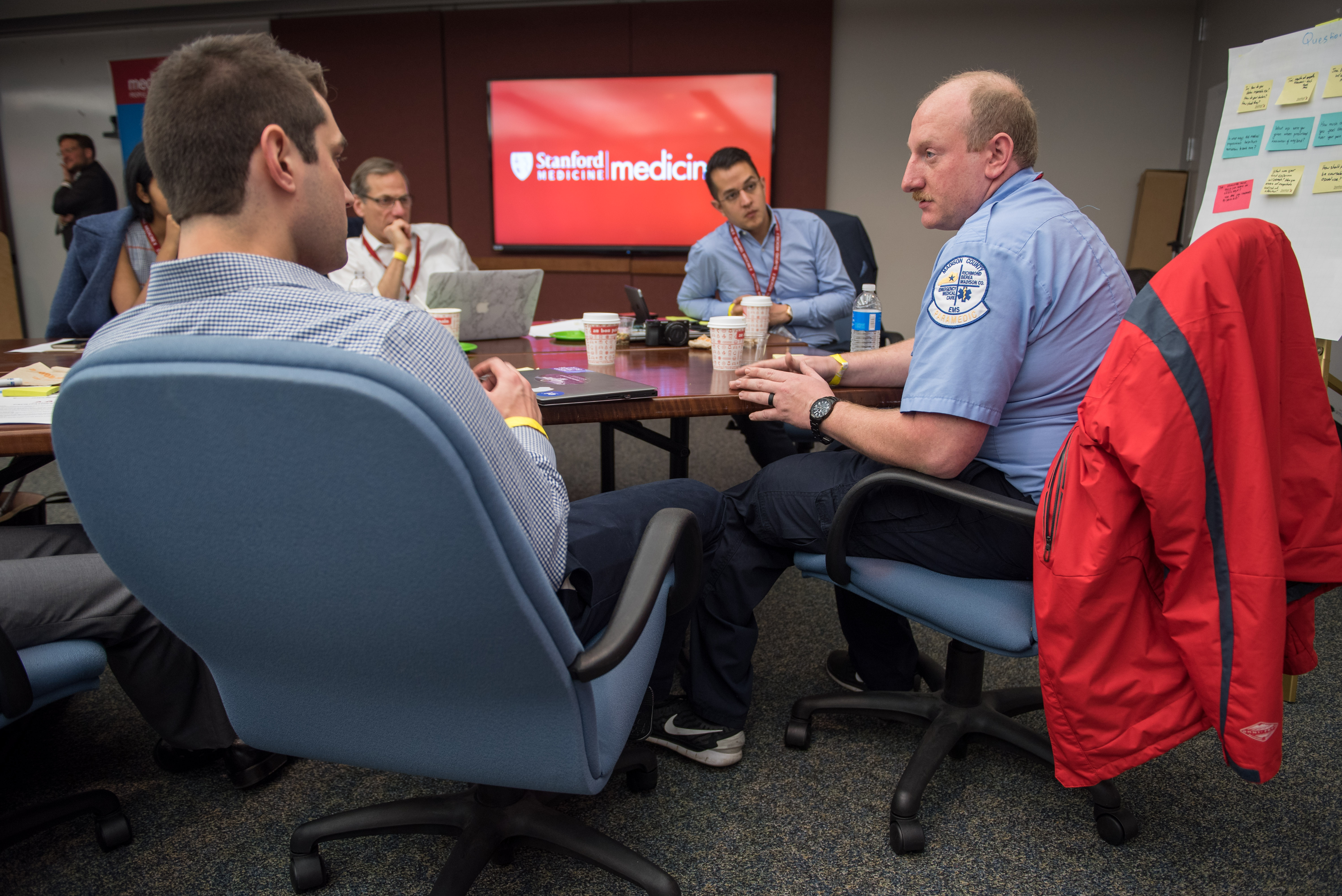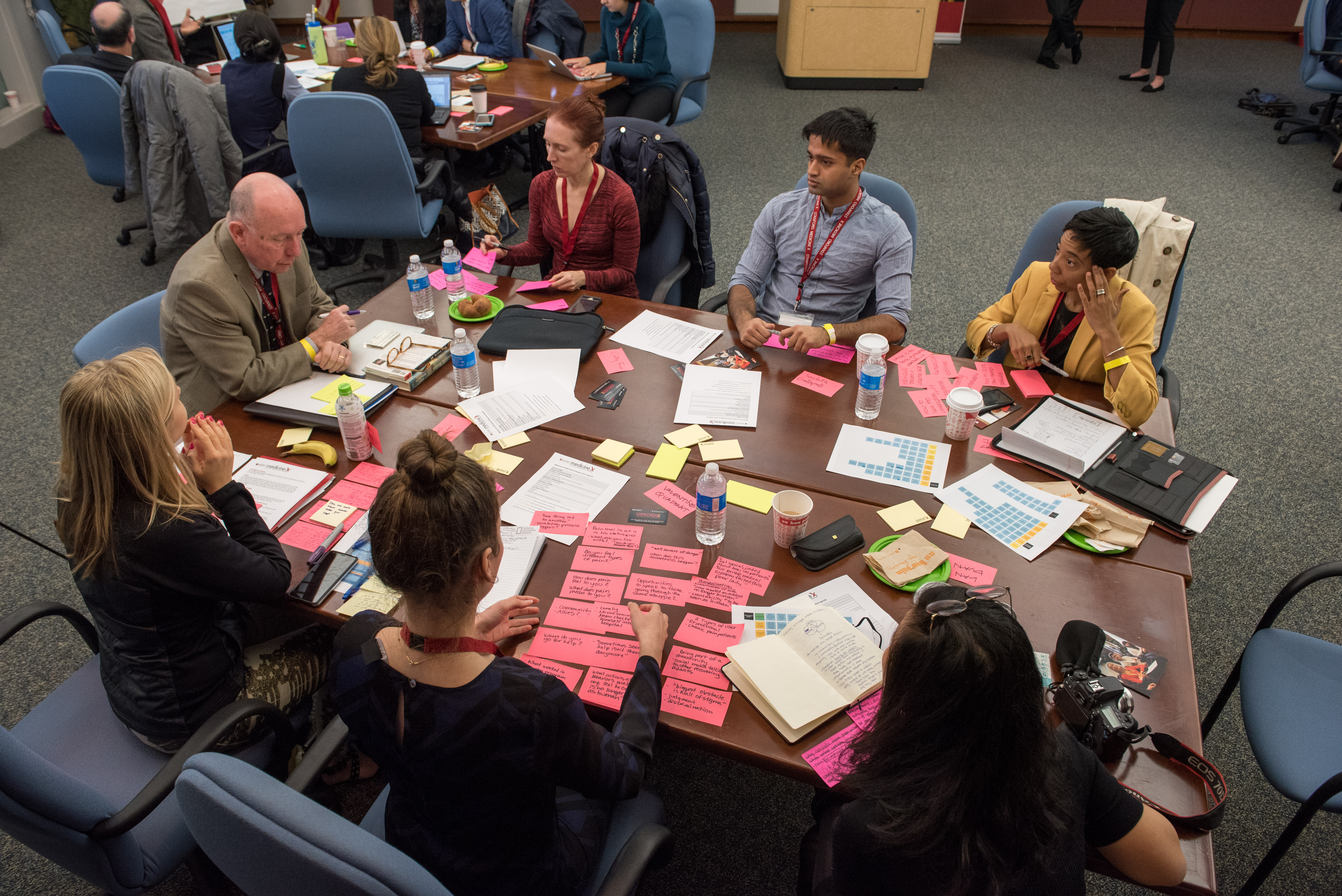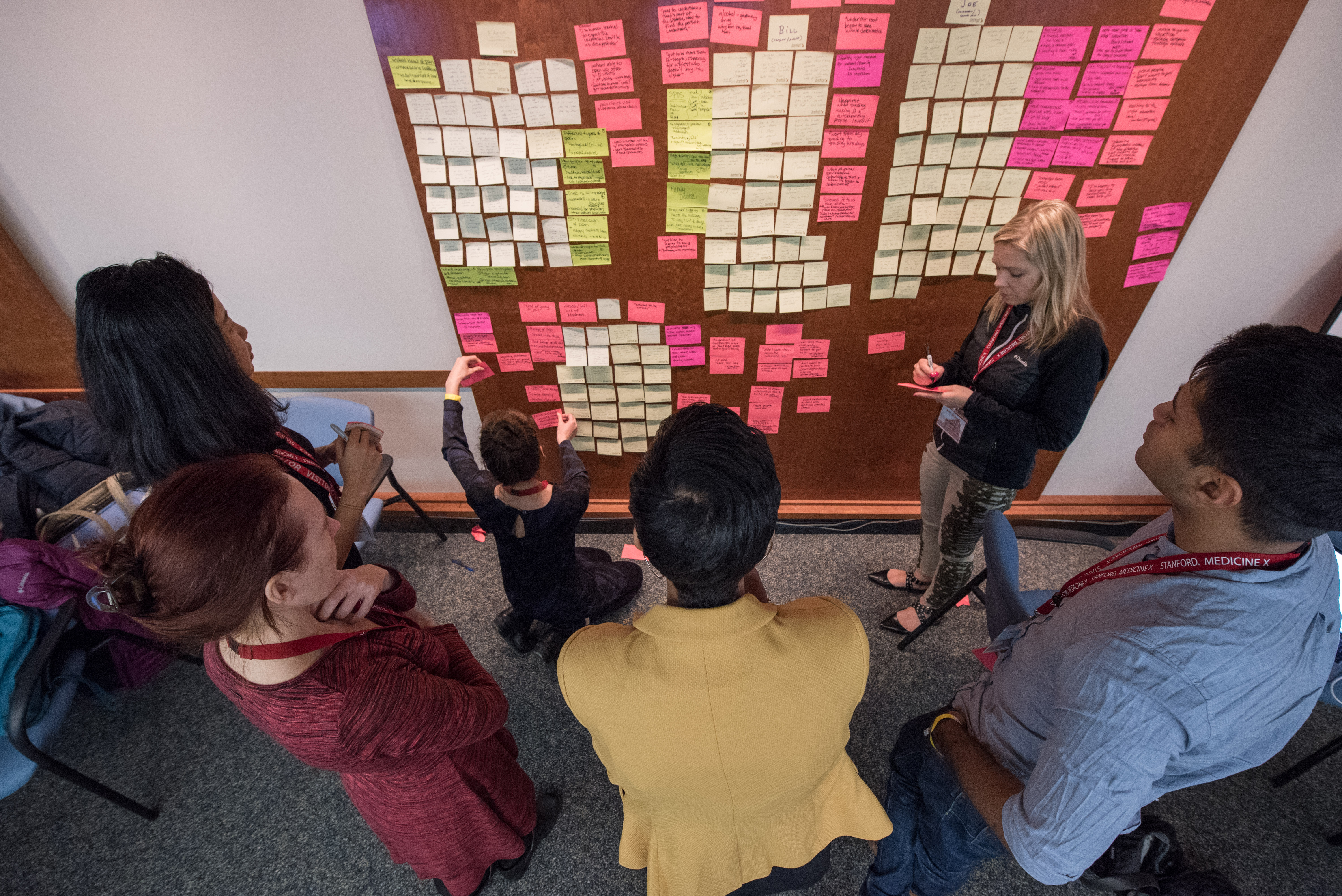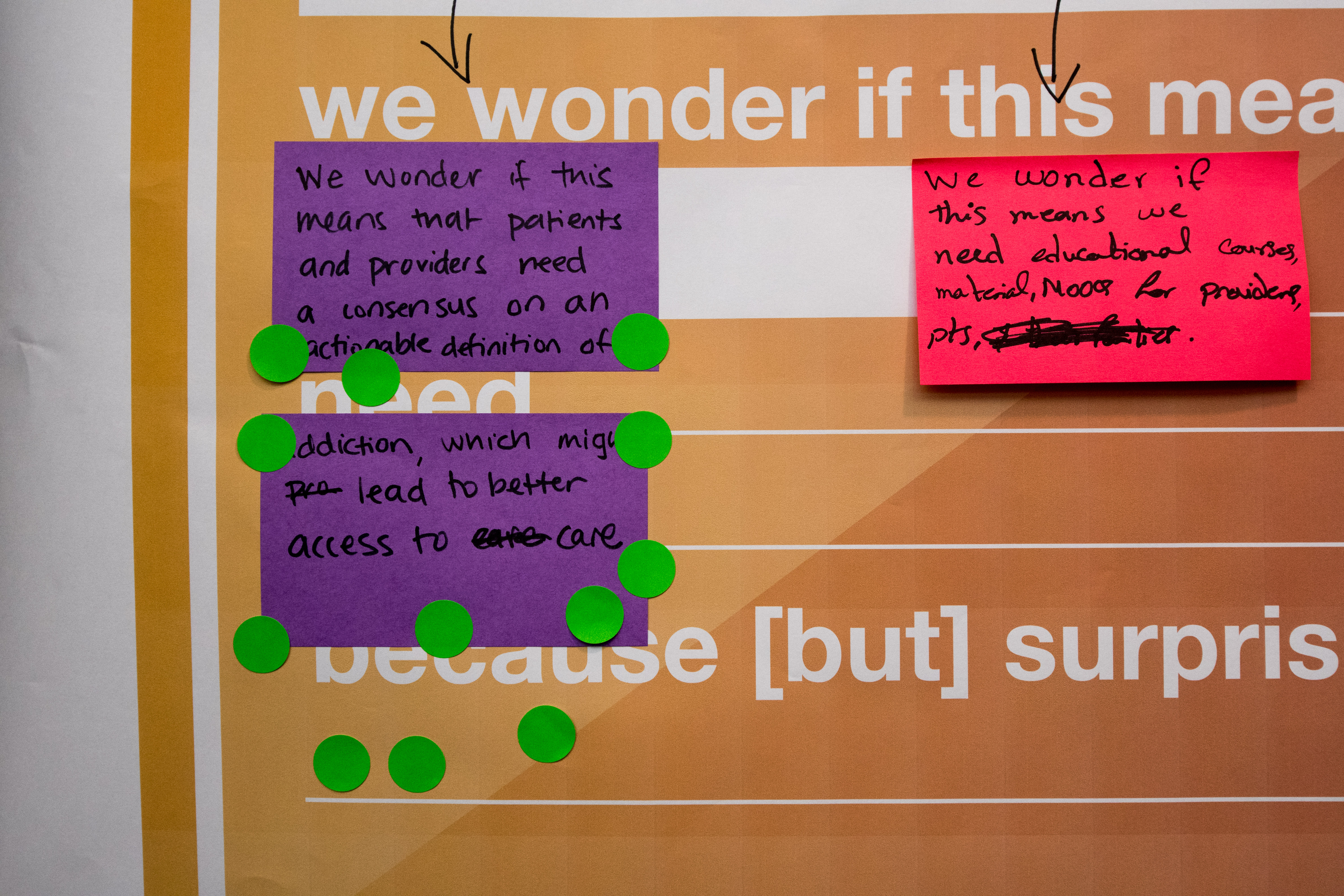developing novel approaches to combat the Opioid Crisis with an Everyone Included™ design team
research approach and methods used
Medicine X Studio designers first conducted primary research with a broad group of stakeholders in the opioid crisis, generating stakeholder personas and relevant insight statements. Dozens of chronic pain patients, first responders, pain management physicians, caretakers, and law enforcement officers were consulted regarding their own specific experiences with pain management and opioid abuse.
Four of the ePatients then joined the Medicine X Studio team in Washington, D.C. to identify relevant themes and insight statements to co-create solutions around the opioid crisis. The full-day design workshop consisted of empathy talks, Q&A sessions, research review and curiosity building, review of notes and themes, and asset production.
The Medicine X Studio team then presented these findings on-stage at the United States Department of Health and Human Services, at a kickoff event for a code-a-thon for the opioid crisis. Hackathon teams used these guiding principles and themes to inform their own tech solutions.
findings
We noticed that:
- There is a binary where a provider is either contributing to the epidemic or under-treating the pain
- People with a strong sense of purpose seem to be “inoculated” against addiction
- There are many different types of opioid users who are frustrated with being termed “addicts”
- Providers have a hard time seeing patients they feel they can’t help.
We wonder if this means that:
- It is a zero sum game where somebody is losing, because of the pressures on the provider and the expectations of the patient.
- Fostering resiliency and a strong sense of self is needed in prevention and relapse education because people who achieve short-term goals build resiliency/self efficacy.
- Patients and providers need a consensus on an actionable definition fo addiction, which might lead to better access to care.
- Conversations may need to be more direct and realistic about the goals in daily life, because chasing a zero pain score may be unrealistic and detrimental.
guiding Principles
- Empathy trumps stigma. Stigma around use, addiction, and treatment is often the result of fear and judgement that fuels a downward spiral. Empathy, caring, and short circuiting stigma/fear to help lift people up.
- Make positive pathways clear. Modern ads, culture, languages, and news tell us everything can be treated, but with opioids we often miss the opportunity to treat the deeper need. Tools should help people address root causes rather than surface level fixes.
- Disrupt entrenched systems. From production to treatment, economic and social systems often serve as incentives for use and addiction (E.G: HCAHPS promotes having little to no pain, pop culture promotes tolerance, which for some leads to addiction and dependency). Tools should take aim at these unintended economic and social consequences.
- Be easier and more attractive than the seductive alternative. For many, opioid-induced euphoria is an easier, more accessible substitute for unattainable things like vacations, family support, or even mental health care. New approaches must be even easier, more delightful, and more accessible than destructive alternatives.
- Build people up. Resiliency, self esteem, and confidence are the ropes and ladders that support people and lift them up from the sippery sope of the start of or return to addiction.
- Everyone should win. For many doctors and patients, there is a feeling that everyone oses in today’s transactions. There’s no clear line between under treatment and pain and between over treatment and addiction. Either way, everyone fees a sense of loss and pain. Tools should help everyone feel like they are coming out ahead.
- Foster honest communication. Dsicussions around pain, opioids, and treatment need to be open, honest, and caring. Zero pain or maximum treatment may not be viable options, and discussing those realities openly is crucial for success.
Medicine X | Studio, is the world’s first Everyone Included™ health care design studio. Its purpose is to advance the Medicine X Everyone Included™ framework for health care innovation and our principles for health care co-design with patients, caregivers, providers and end-users of health care. At Medicine X | Studio, we implement these principles and incorporate codified standards through our design projects with the goal of co-designing for a culture of health.
project team members
Larry Chu, MD – Medicine X (Facilitator, Physician Input)
Nick Dawson, MHA – Medicine X Project Designer
Monika Wittig – Medicine X Project Designer
Justin Lai, MPH – Medicine X Studio Lead
Site locations: Stanford, California (USA), Washington, DC (USA)
collaborating organization
United States Department of Health and Human Services (Bruce Greenstein, Office of the Chief Technology Officer).
The United States Department of Health and Human Services (HHS), also known as the Health Department, is a cabinet-level department of the U.S. federal government with the goal of protecting the health of all Americans and providing essential human services. Its motto is “Improving the health, safety, and well-being of America”.







